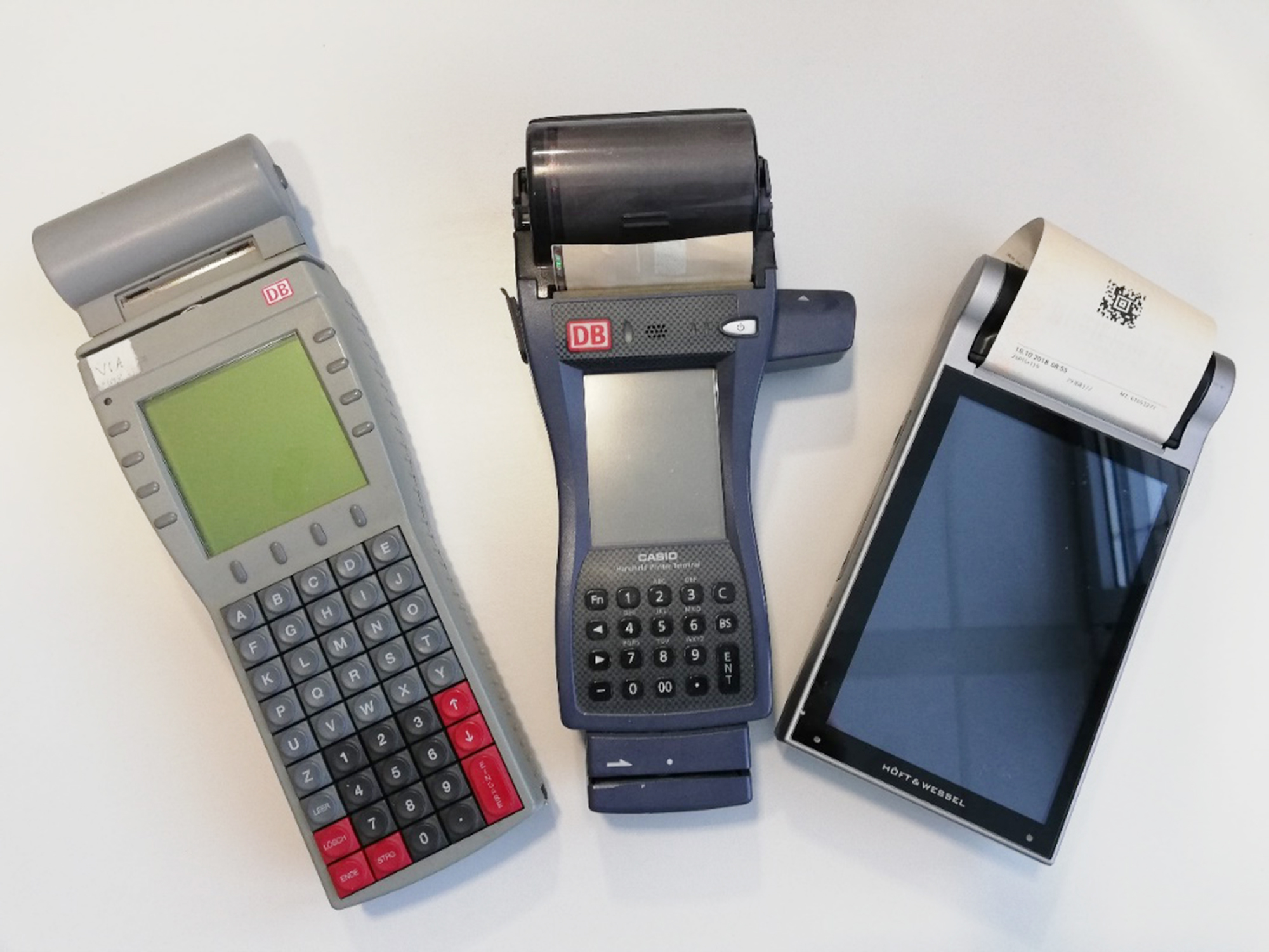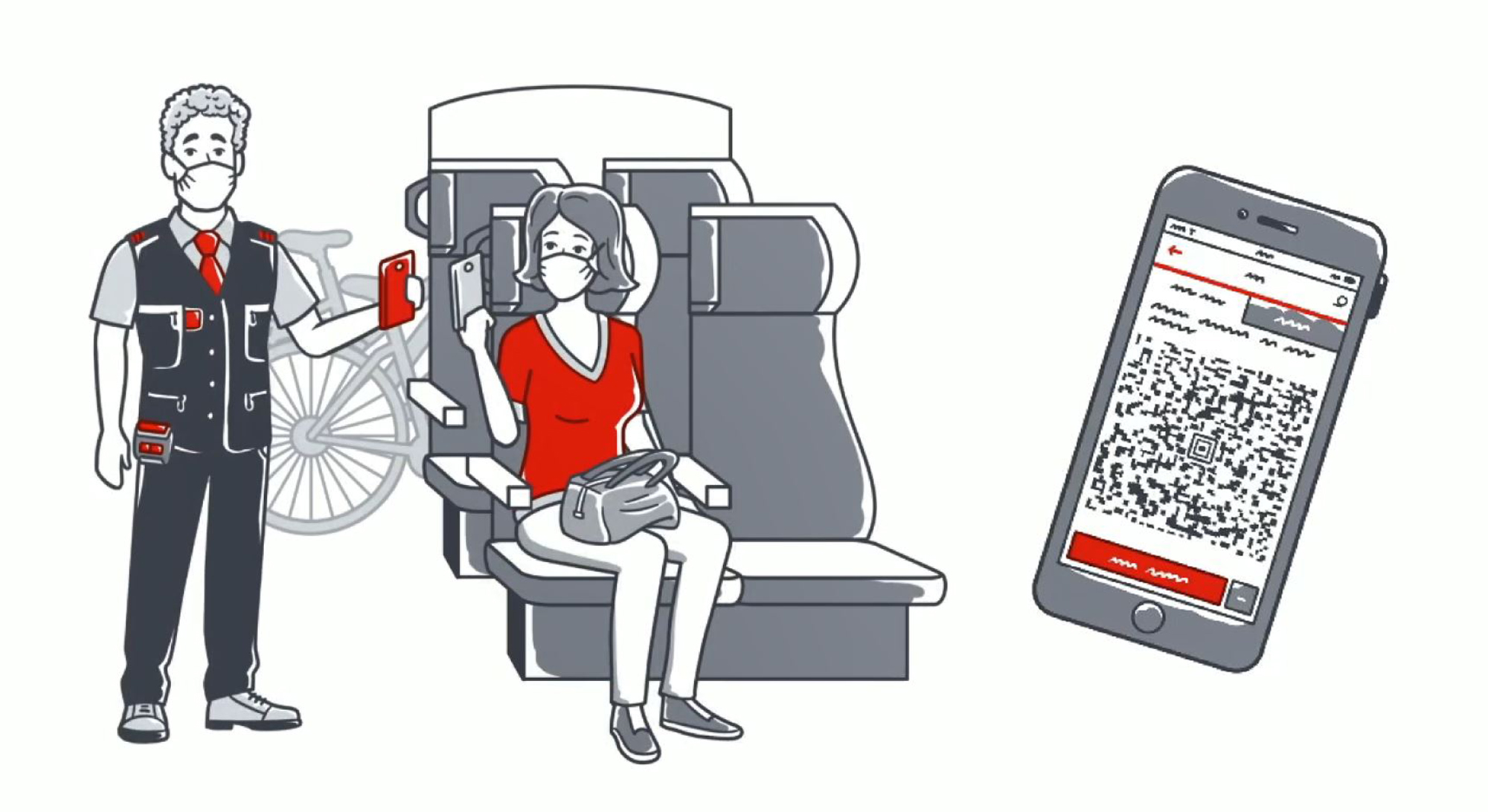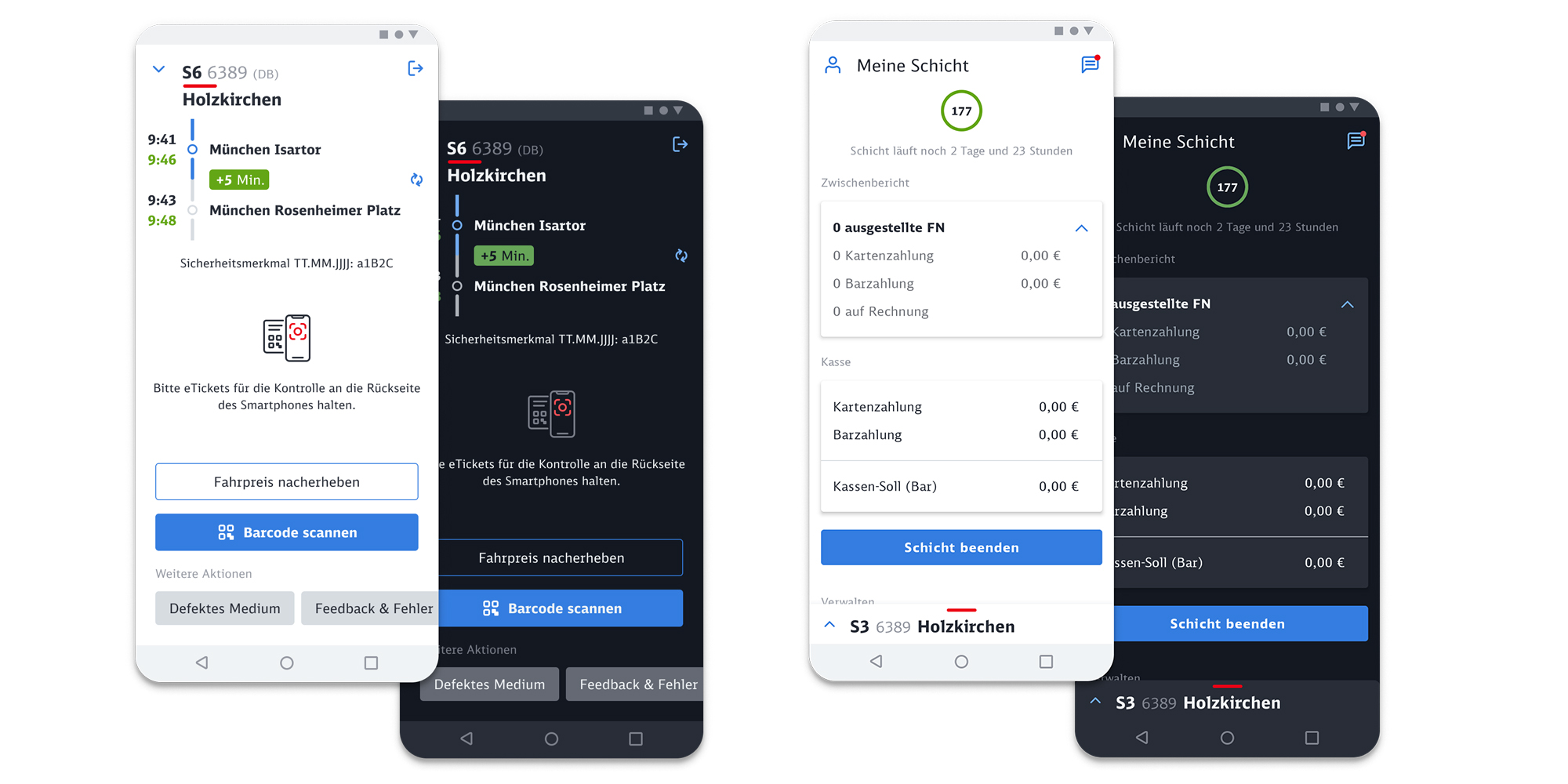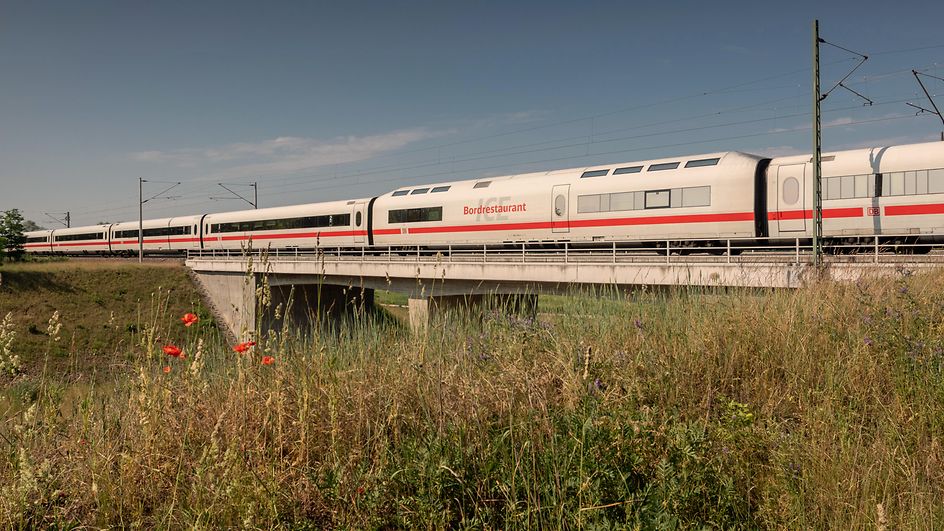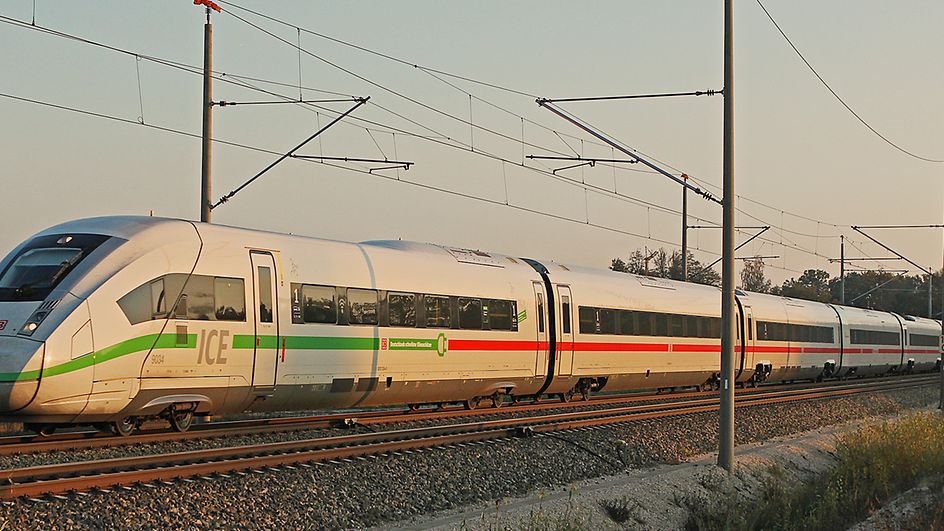The MOSAIK mobile terminal
Article: The mobile ticket inspection solution of the future
10/2021 - The MTx mobile terminal used in Deutsche Bahn's passenger transport services is on its way out. Live deployment of the new modular MOSAIK system on selected routes indicates that ticket inspection, penalty fare collection and ticket sales on trains and buses are set to become even more innovative, reliable and efficient.
The current "MTx" mobile terminal is the main tool used by crews on board trains in the DB railway network. Train attendants in long distance transport and customer support agents and inspectors in regional and local transport use the terminal to inspect and sell tickets, collect fares on board and issue penalty fares. Soon, however, this established system will be replaced by the innovative new development "MOSAIK". The scale of this undertaking should not be underestimated. The vital role of a mobile terminal in ensuring smooth operations is borne out by the huge number of MTx terminals currently in use, with some 12,000 units being used by DB Regio, DB Fernverkehr and partner organisations.
Today's MTx mobile terminal is an all-in-one industry solution that integrates several hardware components in a single device, for example, an imager for scanning bar codes, an NFC reader for checking chip card-based e-tickets, a magnetic card reader for credit card payments and a printer. "For our current MTx solution, which we have been using since 2015, and for the two previous generations of the solution, we used a special industrial device. We even had a special Android operating system version built that met DB's security requirements at the time," says Hubertus Fuchs, Head of Mobile Terminals and E-Tickets at DB Vertrieb, who is also responsible for developing MOSAIK. Even then, the profitability calculation was based on a service life of seven years. And that life cycle ends next year. "The MTx continues to run robustly and the hardware is also holding up well. But we're very limited now, especially when it comes to software. For instance, Android 7 is the latest operating system version that we can run," says Hubertus Fuchs. "We have to backport security patches for later Android versions to Android 7 at great effort if we want to have them on the MTx. In addition, the task of implementing new functions in the outdated software architecture is often extremely difficult, costly and prone to errors."
"MOSAIK will allow us to take advantage of market innovation cycles while eliminating dependence on specific hardware."

The new MOSAIK system has been running on some DB routes for a year now. But this is much more than just an update or further evolution of the old system: it's an innovative and modular reinvention.
Innovative software development with standard hardware
"The basic software of the MTx essentially dates from the last millennium," says Robert Daub, Product Owner at DB Systel. "We wanted to make the whole system more modern and user-friendly." What makes this so special is that DB is completely redeveloping the MOSAIK software using an agile, user-centred approach. Where possible, it is integrating software components that are available on the market, for example, the scanning libraries required to check bar codes. When it comes to hardware, DB intends to rely on standard hardware and a multi-component solution consisting of a smartphone, printer, smart card reader and payment terminal rather than an industrial device. "MOSAIK will allow us to take advantage of market innovation cycles while eliminating dependence on specific hardware," says Hubertus Fuchs. MOSAIK is also powered by Android, but in the latest updatable version. The app runs on a standard consumer smartphone. The advantage of this is that even mid-range devices now come equipped with the powerful cameras, NFC chips, wireless technologies and USB ports that are needed for MOSAIK.
"A lot of what we implemented with MOSAIK was already there. But we've taken it to a whole new level thanks to the technologies and programming languages we've used as well as the UI and UX."

The new system offers even more advantages. Because MOSAIK does not use the hardware exclusively, other applications that employees need to do their jobs can also be installed and used in parallel on the end user device. Instead of having a separate work phone and inspection device, employees can now do everything on the same piece of equipment. In addition, MOSAIK provides greater flexibility when allocating required functions and modules based on the specific needs of particular employees or roles. Users get only the functions, data and hardware components that they need for their own role.
"We have set ourselves the goal of using existing standards and elements of the Group's existing modular IT system whenever we can, in order to avoid creating proprietary solutions," says Hubertus Fuchs. MOSAIK is built on existing standard systems such as the Group's Enterprise Mobility Management (EMM) system for managing mobile devices, DB Playstore for distributing the app or the DB User service for user registration and login. However, there is no reason that MOSAIK cannot be integrated into systems outside the Group as well.
New approaches were also taken in software development. For instance, no code was ported from MTx. The new development was based on the Kotlin programming language, and the monolithic backend is gradually being converted into a microservice architecture. Tools are also being used immediately after application development to check the development results for security-relevant errors. The app is now implemented overnight and its quality is assured through greatly expanded test automation. Release management and commissioning processes have also been completely reorganised. Whereas it used to take months to publish releases and adapt software, this can now be done overnight. "A lot of what we implemented was already there," says Robert Daub. "But we've taken it to a whole new level thanks to the technologies and programming languages we've used as well as the UI and UX."
Successful deployment in three pilot regions
Just how well MOSAIK is already working is clear from the glowing feedback received from some 300 users in the three pilot regions where the modular system has already replaced the MTx: S-Bahn München, S-Bahn Stuttgart and the transport associations in the DB Regio Region Central. MOSAIK users in these regions can access functions that were either difficult to use with the MTx or were not available at all. In addition to bar code checks at lightning speed and reliable e-ticket inspection, a wide variety of penalty fare notices can also be issued quickly and easily. "With an up-to-date standard smartphone camera and the integrated bar code recognition library, we're already faster today than with the MTx," says Hubertus Fuchs. Other features include online address data validation and online fraud detection.
The agile development approach means that feedback from the first users in the pilot regions directly and continuously influences the ongoing development of the software. Other functions are already on the agenda, like cashless payment with any standard modern payment method – both contactless and contact-based – and automated reading of ID data when recording personal details. Sales is another major focus. In future, it will be possible to use MOSAIK not only to check almost any fare, ticket type or ticket standard in Germany, but to sell them as well. Therefore, the focus of the project this year is on implementing various sales functions, from the DB tariff to the various state tariffs and transport association tariffs, followed by the numerous regional and association-specific requirements.
Continuous development
The mass rollout across Germany is scheduled for 2022. In the meantime, four EU tenders will take place for the future hardware – namely smartphones, printers, smart card readers and electronic payment terminals. For the rollout, corresponding starter packages will then be put together for the users in the regions, containing the required devices, which will already be pre-configured. And finally, the finished sets will be distributed nationwide, users will be trained and we will be able to say goodbye to MTx and hello to MOSAIK.
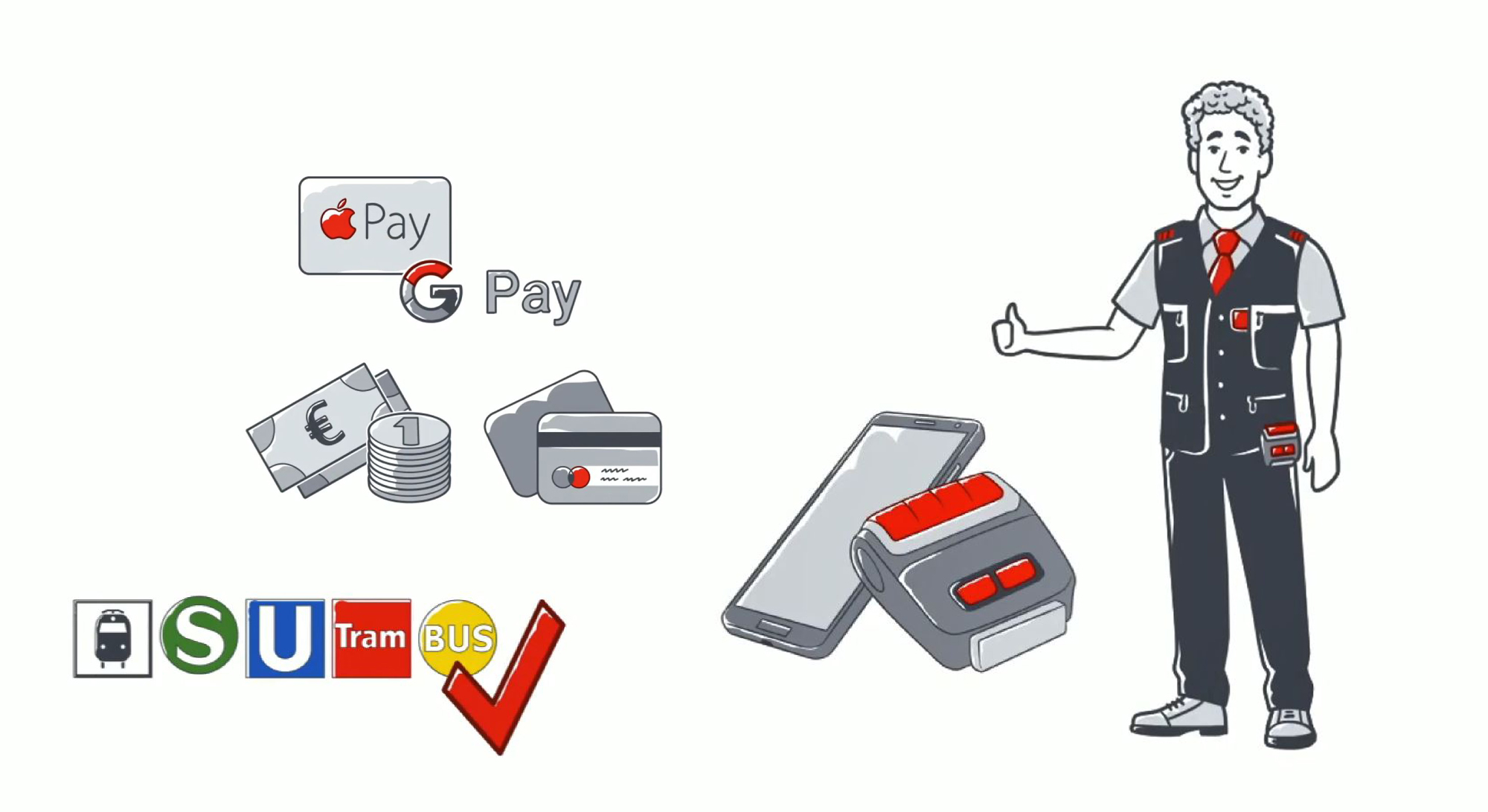
But even then, the work will be far from complete – in fact, it may never be. This is because the system is designed to be continuously developed and optimised during operations and will no longer require such a large and costly rollout in the future. "Our goal is to continuously develop our product further so that it can be used on trains and buses, both by DB and by our external partners," says Hubertus Fuchs. "Our development backlog is already bulging and team members already have wonderful, innovative ideas about how we can make our users even happier."
